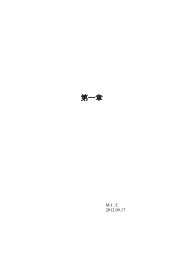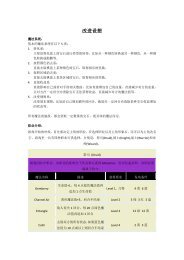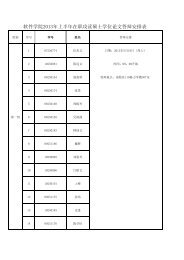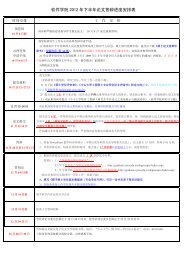A more secure steganography based on adaptive pixel-value ...
A more secure steganography based on adaptive pixel-value ...
A more secure steganography based on adaptive pixel-value ...
Create successful ePaper yourself
Turn your PDF publications into a flip-book with our unique Google optimized e-Paper software.
Multimed Tools Appl(a) UCID1151 (b) UCID543 (c) UCID603(d) NRCSCT01005(e) NRCSHI03034Fig. 5 Some examples with large smooth regi<strong>on</strong>s in databasesbetter <str<strong>on</strong>g>based</str<strong>on</strong>g> <strong>on</strong> the characteristics of HVS. In this subsecti<strong>on</strong>, we will present someexperimental results about the objective quality.The PSNR (Peak Signal to Noise Ratio) is most comm<strong>on</strong>ly used as a measure ofquality, which defined byPSNR = 10log 10max(x) 2∣ ∣ ∣ x′ − x ∣ ∣ ∣ ∣ 2where x is the cover image and x ′ is the stego image.Table 2 gives the average PSNR of the stego images using different steganographicschemes with the embedding rates ranging from 5% bpp to 30% bpp. It is observedthat, the IPVD scheme usually obtains the best image quality. Although our stegoimages have high quality (all over 45 dB), it is still relative lower comparing with theothers, decreasing by 3.1 ∼ 3.9 dB with respect to the best <strong>on</strong>es.The classical PSNR quality metric does not take into account the HVS characteristics.It treats the distorti<strong>on</strong>s in all regi<strong>on</strong>s in the same way. An <strong>adaptive</strong> wayTable 1 The number and percentage of images in our test database that can be used for a givenembedding capacity5% bpp 10% bpp 20% bpp 30% bppNumber 3,855 3,851 3,831 3,772Percentage (%) 100 99.99 99.38 97.85















